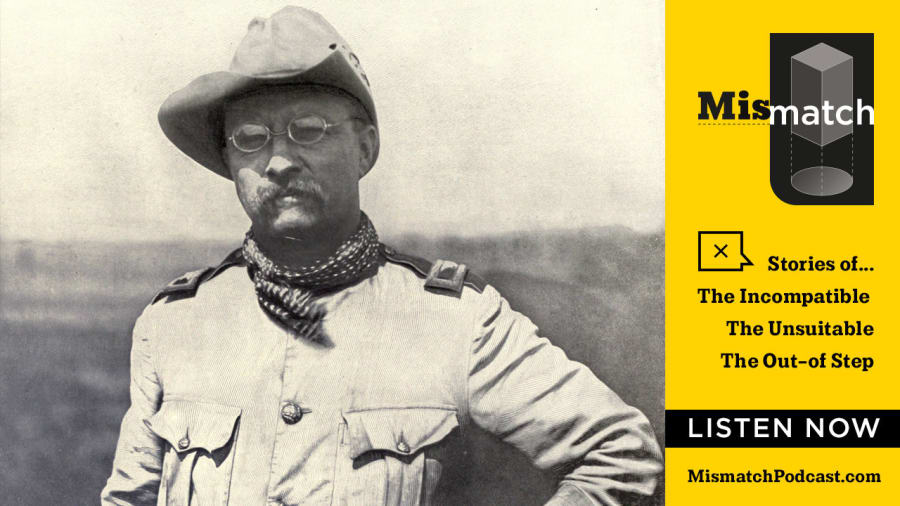Theodore, better known as Teddy, Roosevelt has always been admired for his toughness, which he took to the extreme: like in 1912, when a would-be assassin shot him on the campaign trail. Bleeding from a chest wound, Roosevelt went on to deliver a 90-minute speech before going to a hospital.
That’s just the kind of guy he was.
Recommended Videos
About 1 1/2 years later, Roosevelt came even closer to death on the River of Doubt.
Do you know the story? After losing a presidential re-election bid, Roosevelt traveled to Brazil for a dangerous journey down an unexplored river. Three men died on the trip. Thanks to his son's heroism, Roosevelt made it out alive, but just barely.
No detail is spared in this week’s episode of “Mismatch,” Season Two, which explores the final major chapter of Roosevelt’s remarkable life -- his bold, and arguably foolish venture into an unexplored region of the Amazon. It’s an appropriate story for this month, seeing as we’re coming up on 100 years since Roosevelt’s death in January 1919.
Have you heard of “Mismatch?” It’s a podcast from Graham Media that’s practically guaranteed to captivate you once you give it a listen. Each episode starts with a brand-new story, so you can jump in whenever -- you won't be scratching your head if you missed last season or last week's episode (but hey, while we're on the topic, it's worth a mention that all these episodes are worth your time!). The podcast is based on the idea that some of the most compelling stories feature some element of a mismatch: people who don't line up with each other or with their circumstances.
Even if you think you’re familiar with Roosevelt and his daring adventures, this is a story you probably haven’t heard in its entirety. The host, Roger Weber, chats with Jeffrey Lehmann, who went on a centennial scientific expedition down the same river in October 2014. For some perspective, consider this: Lehmann had plenty of food during his trip. He still lost a lot of weight.
“The exhaustion was similar to running a marathon every single day,” Lehmann said. “Over the 23 days, I lost about 23 pounds, even with all that food I was eating.”
Roosevelt, on the other hand, went from around 225 pounds to about 165 pounds, Lehmann said.
“I've been on a lot of adventures. I've done a lot of extreme sports,” said Lehmann, who hosts “Weekend Explorer,” a public TV series. “(But) I knew from day one, (this trip) would be the most dangerous, most challenging thing I ever did in my life. It lived up to that expectation.”

At the time of the trip, Roosevelt was dealing with a leg injury from a carriage accident that he’d suffered as president, which turned into an infection; and then malaria, a fever, heart palpitations, shortness of breath, a heart condition he’d always had, and delirium.
One day, he could barely get off his cot. And then his team made a crushing discovery ahead: the most punishing set of rapids yet, including a 30-foot waterfall. The slippery rock face on either side was nearly vertical.
If Roosevelt was afraid of dying from animals, or drowning, disease or starvation, he would never have admitted it. Before the trip, he wrote to a friend that he was willing to “leave his bones in South America.” But Roosevelt was worried about the man in the lead canoe: his son, Kermit.
The 24-year-old didn’t even want to go. Kermit had just gotten engaged and had also recently fallen off a 40-foot bridge, suffering some pretty brutal injuries. But then he received letters from his mother, persuading him to join. To paraphrase, it read, in part, something like, “You know how (Teddy) is. He wants to be one of the great explorers, and he's willing to die on this path to find this river.”
Not only did Kermit go on the trip, but just wait until you hear how he stepped up to save his father.
So, did the River of Doubt shorten Teddy Roosevelt’s life? Was it an admirable trip, or was it crazy? You might be surprised what one historian and author had to say about what it meant for his political party.
If you're intrigued, give the podcast a listen. You can stream it any time, anywhere.
Editor's note: Podcasts, by the way, are really easy to access -- even if you’re not very tech-savvy. Don’t let the word throw you off. Though podcasting is a new technology, it revives an old art form: pure storytelling.
Let’s say you’ve never listened to a podcast before. Just go to our website, hit “play” on the episode of your choosing and it’s as simple as that. iPhones even come with a Podcast app where you can subscribe, and if you own an Android, you can download an app -- Stitcher is a good one -- to accomplish the same thing.
Watch for new "Mismatch" episodes from Graham Media dropping every Thursday.



